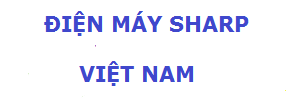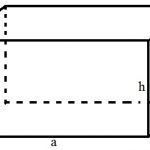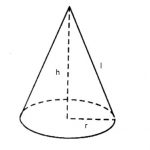The purpose of technology and tools is to improve our quality of life and productivity. Since time is the most valuable resource anyone can own, there are a wide variety of time management solutions available. As a result, selecting the appropriate tools to utilize might be very difficult. Learn which time management tools the most productive people use in this post with us, as well as how to combine these tools into the ideal time management technology stack.
Nội dung bài viết
The distinctions between time management methods, strategies, and tools.
The key soft skills that might help you better manage your time are time management skills. Setting boundaries, planning, delegating, prioritizing, and other time management techniques are examples.
There are many various methods for managing your time, including time management frameworks. Getting things done (GTD), the Pomodoro timer, the Eisenhower matrix, and many other time management strategies are examples.
Techniques for managing your time include procedures, rules, and other suggestions. These methods also suggest a wide range of time management devices.
Calendar, note-taking software, time tracking, specific time management apps, and other tools are examples of time management
Ten ways that using time management tools can truly benefit you

Simply put, the purpose of time management tools is to improve your time management. Using time management software can help you be more productive, make wiser use of your time, and spend less time on activities like reporting and billing.
You must be aware that it’s very simple to get enthused about a new tool when we talk about time management tools. Using the chosen tool regularly is the challenging part.
Because of this, you must pick the best tool for your objective, establish a very excellent reason for wanting to improve your time management skills (e.g., to earn more money, have more free time), and then utilize the tool for a sufficient amount of time to become accustomed to it.
The following is a list of the things that time management tools can aid you with the most:
- Setting goals in writing (clearly defined goals help with time management tremendously)
- Putting your week in order and making plans for your time in advance
- Possessing a list of all the duties that must be performed (with deadlines)
- Setting your priorities (or not forgetting about them)
- keeping track of and evaluating all the time spent (for optimization purposes)
- Administration simplification (such as reporting, invoicing etc.)
- Collaborating with your group
- Better meeting management
- Reducing distractions and improving attention
- evaluating your performance and forming new habits
You should be more successful as a consequence of all of these steps, more efficient as a result of working quicker in the flow without interruptions, saving time with reporting, better communicating about your goals, etc., and taking on bigger projects with more value contributed.
The bottom line is that you can increase your income and free up more time if you select the appropriate technology stack (and use it).
The factors you should take into account when selecting the top time management tools

How to select the ideal technology stack for your needs is a very important subject in the wide ocean of time management solutions. To try a few of them out is by far the greatest advise.
Try them out for a short while to determine if they meet your needs. Like we do at My Hours, almost all apps provide a free trial or a free edition.
Yet, it is impossible to examine each of the many time management apps available. While selecting the best technology stack, take into account the five selection criteria listed below to help you narrow down your options:
1. Many or one app
Some apps specialize in performing a single task exceptionally well, and you can connect different apps through APIs (an example would be our My Hours, specializing for time tracking). Some software solutions provide numerous tools in a single package, but typically those functions may not function as well, making them less advanced (an example would be Wrike). Anything you decide depends entirely on your needs and interests.
You can choose a one-point solution if you want everything in one location (tasks, calendar, notes, etc.) and are willing to give up some functionality and user experience. But if you’re a little more experienced, you might prefer connecting a few apps that are each excellent at one thing.
2. Industry pioneers or newcomers
Should you choose a startup or a major brand as your next selection criterion? Big brands that are market leaders are typically a secure bet. But eventually, the majority of industry leaders either stop innovating seriously or let their products bloat with pointless features.
Market newcomers must innovate more aggressively by offering something unique and useful. Also, you may give many young businesses suggestions for new features and guidance on how to expand.
The drawback is that if they are too new, they might not survive. Make sure you can backup and study all the application data before choosing a newbie.
Even full newcomers to the market can be an alternative for you if you consider yourself to be a “early adopter” and you enjoy trying new things.
Alternatively, market leaders or “proven newcomers” are usually a better option if you tend to be more sceptical. The latter group—proven newcomers—is frequently the best option.
3. Software capabilities
The majority of well-developed tools provide a largely uniform set of features. Nonetheless, practically all programs make an effort to stand apart in some way with extra features and add-ons.
They include things like alternative meeting templates, API connectors, and browser extensions. Simply list all of your requirements and then perform a little feature study to get the solution with the correct combination of functionalities.
4. Using UX and “look and feel”
You will use the chosen time management tool daily if you do it correctly. It should therefore have the appearance and texture that you really appreciate. That covers the layout, hues, fonts, and all other pertinent elements. But in this case, design is not the only factor that matters.
Sometimes, a good user experience is even more crucial than design. Your user experience should be straightforward, rational, and fluid. Every software requires some getting accustomed to, but eventually you have to fall in love with the program you use.
5. Mobile initial
These days, smartphones are how we do and spend an increasing amount of time (instead on desktop computers). This calls for you to ensure that the time management program you choose has a fantastic mobile solution in addition to just a web or desktop edition.
Make sure your solution includes a native app for iOS and Android in real-world scenarios. Thus, don’t forget to test the mobile app that goes along with the program when you’re testing it.
Let’s examine the various time management tools and the top suppliers in more detail now that you are aware of the most crucial selection criteria for time management software.
The top time management resources for everyone who wants to master time management

You must employ and logically mix five main categories of time management tools. In addition to these tools, you can use time management strategies like the Eisenhower matrix, the Pomodoro timer, and Getting Things Done.
The five tools are listed below:
- Calendar
- Project manager or task manager
- Tracker for time
- App for capturing notes (with templates)
- Tools for distraction avoidance, habit tracking, and other things
Tools for habit tracking, avoiding distractions, and similar
Many solutions are also available to support various time management strategies. Just keep in mind that using fewer tools effectively is preferable to installing too many tools and using them only partially.
- Our pick for the top habit-forming activities:
- Momentum is a personal dashboard made to inspire and remove distractions.
- Stickk is a social networking site that supports goal-setting.
- You must employ the following other beneficial tools for increased productivity:
- a website and app blocker called Forest and Freedom
- Brain.fm: Focus-enhancing music
- Use the Pomodoro technique with this timer for the Pomodoro method.
- With IFTTT and Zapier, you can connect apps and automate process.








